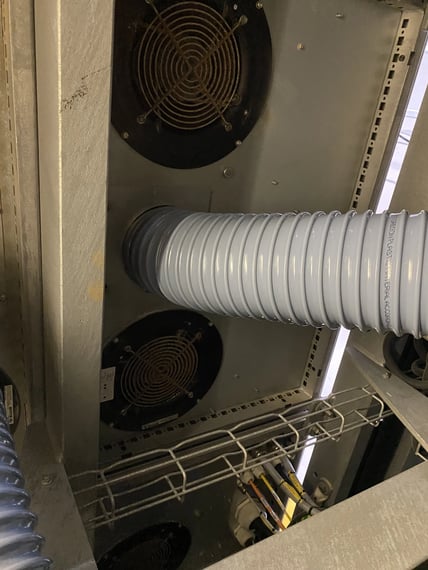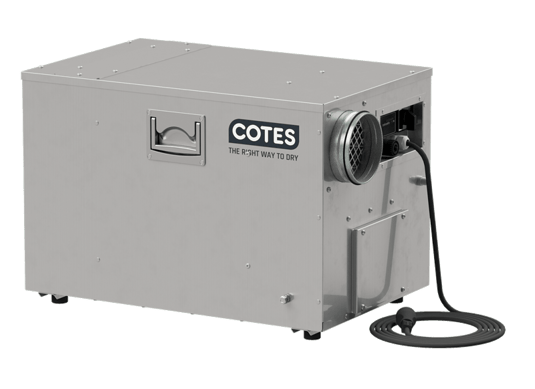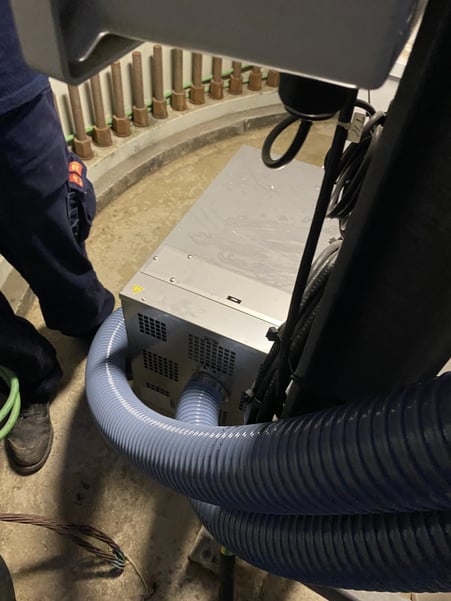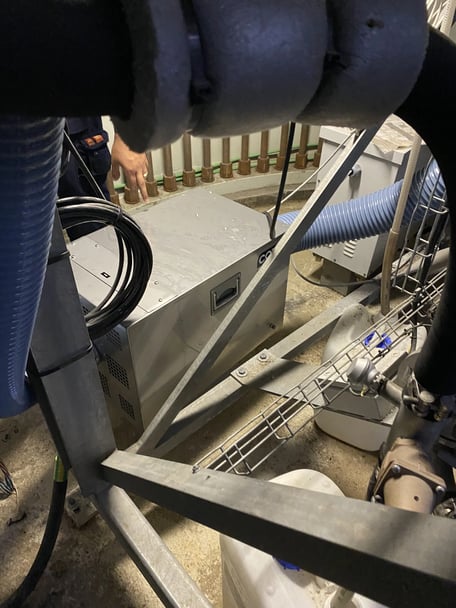THE ISSUE WITH HUMIDITY
Wind turbines are constantly exposed to the elements in challenging and sometimes harsh environments. Fluctuating daily or seasonal temperature cause condensation that put critical components at risk. This is why it is crucial to take protective measures. In this blog post, we describe the dry-air strategy and outline the process of retrofitting a Siemens 2.3 MW wind turbine (located in the windy plains of Texas) with a Cotes dehumidification unit. The CR400BW was chosen for the job.
THE DRY-AIR STRATEGY
Selecting the right dry-air solution for your wind turbines depends on your specific dry-air strategy as well as your priorities as a wind turbine owner.
The problem with this specific Siemens 2.3 MW turbine on this location was converter failures caused by unwanted condensation (and corrosion) arising from daily and seasonal temperature fluctuations. For this project, the customer made it a priority to make and keep the electrical cabinet completely dry by blowing dry air directly into the cabinet, safeguarding the converters and other vital electrical components from corrosion and potential malfunctions.

Image: The dry air from the CR400BW fed directly into the electrical cabinet
THE RIGHT DRY-AIR SOLUTION
The CR400BW is a robust Cotes adsorption dehumidifier specifically designed for use in the largest wind turbines available in the market. The unit ensures a continuous flow of 400m³/h of dry, salt-free air inside the structure, which was calculated to be the optimal airflow for this turbine design in this location to achieve the desired %RH using the CR400BW. Maintaining optimal conditions inside wind turbine nacelles and towers is crucial to avoiding unscheduled downtime and damage caused by humidity. A dry-air solution ensures the wind turbine's reliability and efficiency, thus contributing to its long-term performance and overall effectiveness.
 Image: Cotes CR400BW is a portable mid-size desiccant dehumidifier ideal for retrofitting onshore wind turbines
Image: Cotes CR400BW is a portable mid-size desiccant dehumidifier ideal for retrofitting onshore wind turbines
The CR400BW dehumidifier uses industry-standard F7 filter cassettes for air filtration. These filters are designed to resist clogging caused by the wet, salt-laden air commonly found in coastal, near-coastal, or offshore environments. The F7 filter cassettes are available worldwide, and this, combined with their exceptional durability, contributes to the extended service life of wind turbines, matching the maintenance intervals of the turbines themselves.
INSTALLING A CR400BW
Installing a CR400BW is a relatively straightforward process, and in the case of our customer in Texas, he was able to take charge of the installation himself. The maximum installation time for a CR400BW is only two hours, making for an efficient process with minimal downtime and lost production. In this case, the ducting was supplied by Cotes, but customers have the flexibility to choose their own supplier if they prefer.
Cotes manufactures a range of dehumidifiers in various sizes to cater to different turbine specifications, all adhering to strict international standards.

Image: The inlet ducting of the CR400BW
To ensure optimal performance, fresh air is drawn in from an opening in the door, while the regeneration air, containing moisture, is expelled through the ducting out of the structure. This clever design not only keeps the electrical cabinet dry but also promotes a well-ventilated environment for the turbine's overall operation.

Image: The CR400BW standing in the tower basement = floor installation
COTES DRY-AIR SOLUTIONS
Cotes offers a diverse range of adsorption dehumidifiers specifically engineered for wind turbines. They can be utilised at any point during the turbines' life cycle, whether they are situated onshore, nearshore, or offshore.
.webp?width=511&height=511&name=Wind_Lineup_01%20(2).webp) Image: Cotes lineup of dehumidifiers fitted for wind turbines
Image: Cotes lineup of dehumidifiers fitted for wind turbines
